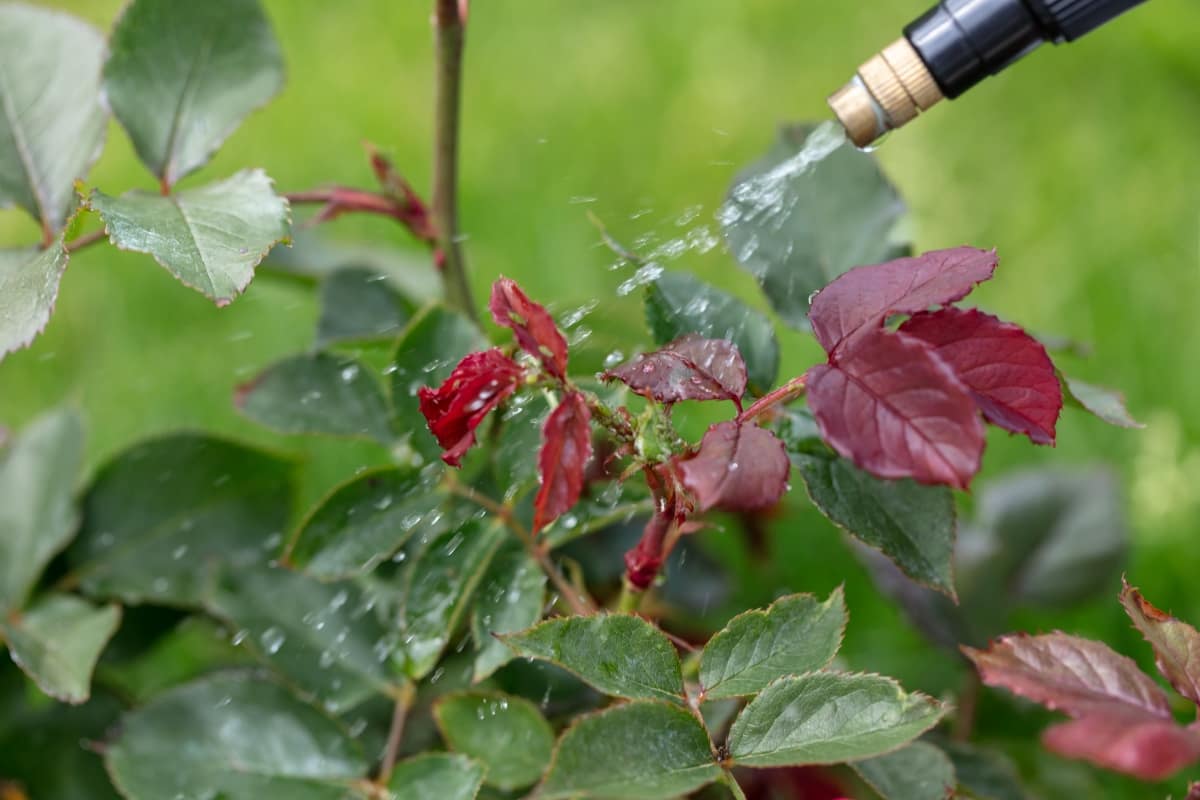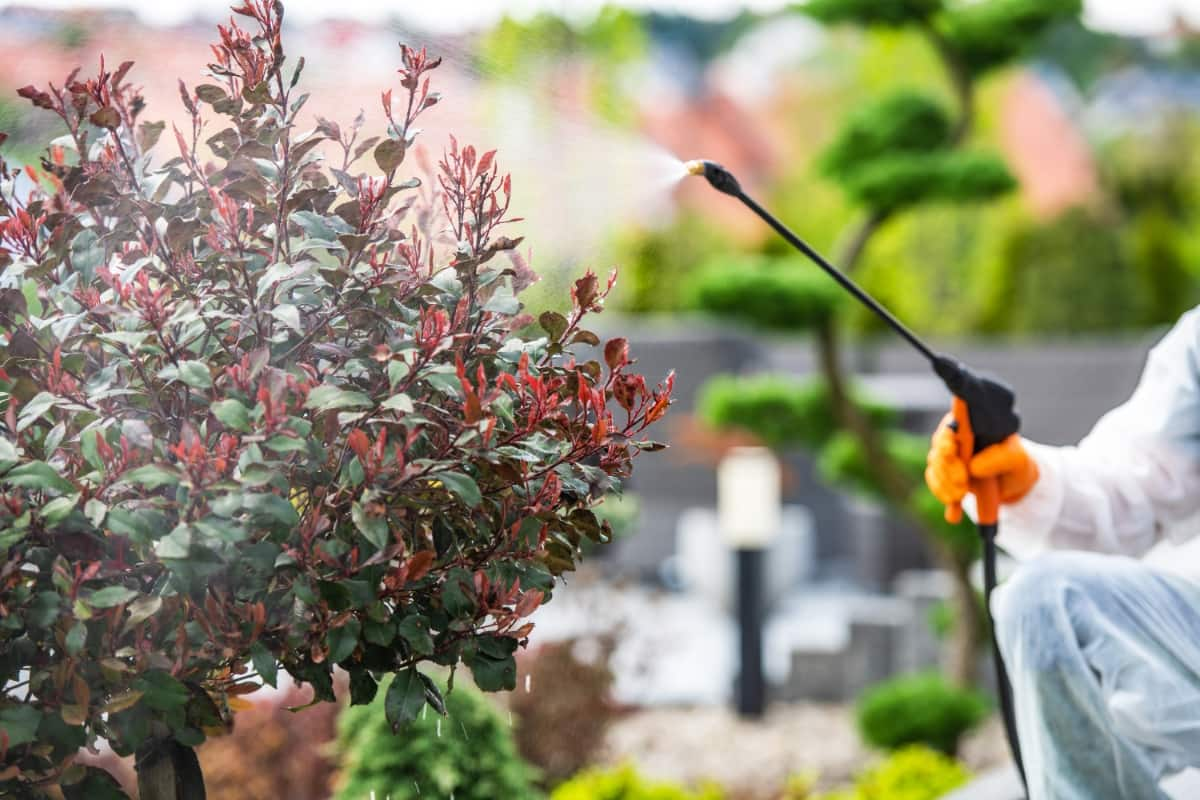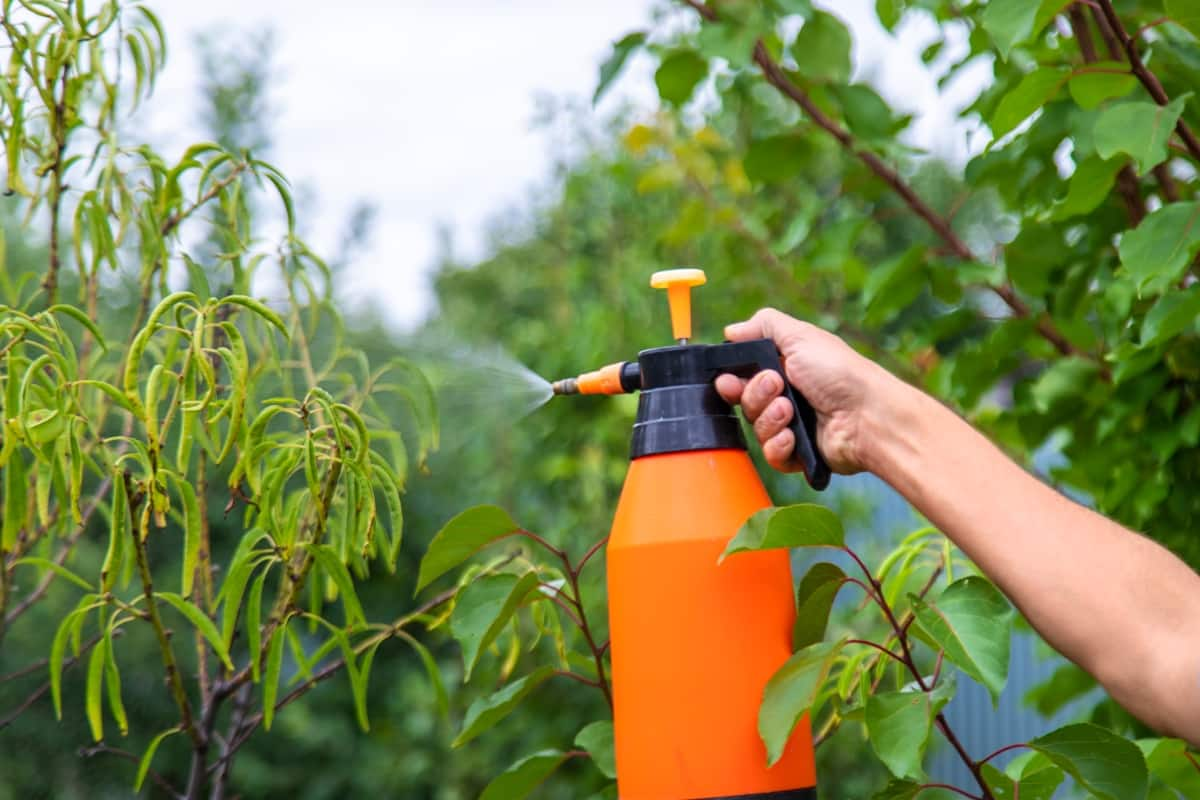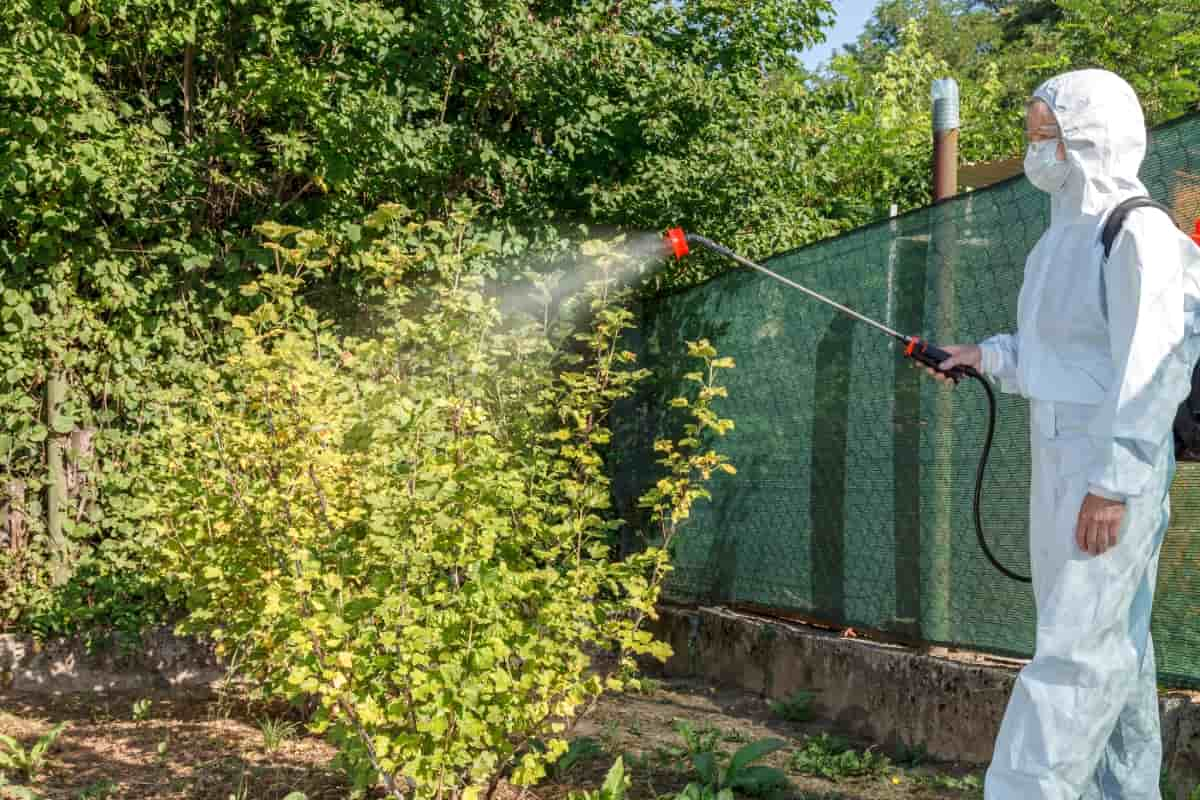Crown borers are a type of insect pest that can wreak havoc on various plants, particularly trees and shrubs. These borers typically target the crown region of the plant, which is the area where the roots meet the stem. They belong to the group of insects known as borers due to their habit of tunneling into plant tissues, causing damage that can weaken or even kill the host plant if left unchecked.
Introduction to Crown Borers
Identifying Crown Borer Infestation
Crown borer infestation is identified by wilting or yellowing leaves, dieback in the upper canopy, sawdust-like frass at the base of affected trees, and entry holes on the trunk. Larvae tunnel through the cambium layer, disrupting nutrient flow and weakening the tree’s structure. Regular monitoring of tree health, especially in susceptible species, helps in early detection and managing Crown Borers in gardens.

Lifecycle of Crown Borers
Development Stages
- Egg Stage: The lifecycle of crown borers typically begins with adult females laying eggs near the base of host plants, often in cracks or crevices in the bark or soil.
- Larval Stage: Once the eggs are hatched, the larvae emerge and begin tunneling into the crown region of the plant.
- Pupal Stage: The pupal stage is a non-feeding stage during which the larvae undergo metamorphosis into adult borers.
- Adult Stage: Once mature, adult crown borers emerge from their pupal cases and may mate to begin the cycle anew.
Seasonal Behavior Patterns
- Spring and Summer: This is typically the period when adult female crown borers lay eggs near the base of host plants. Larvae hatch from these eggs and begin feeding on the plant tissues during this time.
- Fall: Crown borer larvae may continue feeding and growing during the fall months, depending on environmental conditions. As temperatures drop, larvae may prepare to pupate by burrowing into the soil near the host plant.
- Winter: Crown borer larvae may overwinter in the soil as pupae, remaining dormant until the following spring, when they emerge as adult moths to continue the lifecycle.
Prevention Strategies
Cultural Practices for Prevention
As one of the Crown Borer treatment options, implement cultural practices like proper pruning, removing infested plant material, and maintaining a clean garden to prevent crown borer infestation. Monitor the plants regularly for damage signs and use organic mulch to deter pests. Encourage natural predators and beneficial insects in the garden, promoting a balanced ecosystem that minimizes the risk of crown borer infestations.
Choosing Resistant Plant Varieties
Look for Crown Borer resistant plants with natural defenses against these pests, such as thick bark or toxic compounds, for preventing Crown Borer infestations. For example, some coniferous trees like cedar and redwood are known to deter crown borers due to their resinous nature. Additionally, certain cultivars of fruit trees, such as apples and pears, may exhibit resistance to crown borers through genetic traits that make them less attractive or more difficult for the pests to infest. Collaborate with local agricultural extension services or nurseries to identify resistant varieties that are well-suited to your region’s climate and soil conditions.
Monitoring and Early Detection
Crown Borer Monitoring Techniques
- Regularly inspect the base and lower trunk of host plants for signs of crown borer activity, such as entry holes, frass, wilting foliage, or dieback. Pay attention to areas where branches join the main trunk, as this is a common entry point for borers.
- Deploy pheromone traps near susceptible plants to monitor adult crown borer activity. These traps contain synthetic pheromones that attract male moths, allowing you to assess the presence and abundance of adult borers in the vicinity.
- Take soil samples from around the base of host plants and inspect them for crown borer larvae or pupae. Digging into the soil near infested plants can reveal the presence of larvae preparing to pupate or overwinter.
Tools for Early Detection of Infestation
Hand Lens or Magnifying Glass: Use a hand lens or magnifying glass to examine plants more closely for signs of crown borer activity, such as entry holes, frass, or larvae. This can help detect infestations at an early stage when populations are still manageable.
Pruning Shears: Keep pruning shears or scissors handy to remove and inspect suspicious plant tissue, such as wilted branches or areas showing signs of dieback. Promptly removing infested plant material can help prevent the spread of borers to healthy parts of the plant.
Soil Probe: Use a soil probe or trowel to gently dig into the soil around the base of plants and inspect for crown borer larvae or pupae. Sampling the soil can help determine the presence and density of borers in the root zone.
In case you missed it: How to Control Squash Vine Borer: Effective Identification and Prevention Strategies

Biological Control Methods
Natural Predators of Crown Borers
- Parasitic Wasps: Biological control of Crown Borers includes certain species of parasitic wasps, such as Braconid and Trichogramma wasps, which are natural enemies of crown borers. These wasps lay their eggs inside borer larvae or eggs, ultimately killing them as the wasp larvae develop.
- Predatory Insects: Predatory insects like ground beetles and predatory stinkbugs feed on crown borer eggs, larvae, and pupae, helping to reduce borer populations in the ecosystem.
- Birds: Some bird species, including woodpeckers and nuthatches, feed on crown borer larvae and pupae found within tree bark.
Using Biological Insecticides
- Bacillus thuringiensis (Bt): Certain strains of Bt produce toxins that specifically target the larvae of crown borers and other caterpillar pests. Bt formulations can be applied to plant foliage, where they are ingested by borers, leading to their death.
- Entomopathogenic Nematodes: Beneficial nematodes, such as Steinernema and Heterorhabditis species, are microscopic roundworms that parasitize and kill crown borer larvae in the soil. These nematodes can be applied to the soil using irrigation systems or sprayers.
Chemical Control Options
Selecting the Right Chemical Treatments
Chemical insecticides formulated to target borers can be effective in controlling crown borer populations. For chemical treatments for Crown Borers, look for products containing active ingredients such as imidacloprid, cyfluthrin, or permethrin, which are commonly used for borer control. These effective Crown Borer pesticides are often applied as soil drenches or injected into the trunk of trees.
Application Timing and Methods
Begin chemical control measures as soon as Crown Borer damage signs are detected or when adult moth activity is observed. Early intervention can help prevent widespread damage to host plants. Timing insecticide applications to coincide with the vulnerable stages of crown borers, such as egg laying or larval emergence, can enhance effectiveness. Follow label instructions carefully when applying chemical insecticides, and choose application methods appropriate for the target plant species and size. Options may include foliar sprays, trunk injections, soil drenches, or targeted spot treatments.
Integrated Pest Management (IPM) for Crown Borers
Combining Methods for Effective Control
- Biological Control: Incorporate natural enemies of crown borers, such as parasitic wasps and predatory insects, into the ecosystem to help suppress borer populations.
- Cultural Practices: Implement cultural practices like sanitation, pruning, and soil management to create an environment less conducive to crown borer infestations.
- Chemical Control: Use targeted chemical treatments judiciously when necessary, taking care to select products with minimal impact on non-target organisms and the environment.
Tailoring IPM to Specific Environments
- Local Conditions: Consider the unique climate, soil type, and plant species present in your area when developing an IPM plan for crown borer management.
- Pest Pressure: Assess the severity of crown borer infestations in your region and adjust management strategies accordingly. High pest pressure may require more intensive control measures.
- Ecosystem Health: Take into account the potential impact of pest management practices on beneficial organisms and overall ecosystem health. Strive to maintain a balance between pest control and conservation of natural enemies.
In case you missed it: Mango Stem Borer Pest Management: Symptoms, Treatment, Chemical, Biological, Natural, and Organic Control

Physical and Mechanical Control Measures
Manual Removal Techniques
- Pruning: Remove and destroy infested plant parts, including branches and stems containing crown borer larvae or pupae. Pruning can help reduce borer populations and prevent further spread of infestations.
- Handpicking: Inspect plants regularly and manually remove adult crown borers, eggs, or larvae when encountered. This method is most practical for small-scale infestations or individual plants.
Barrier Methods to Prevent Infestation
- Tree Wraps: Install tree wraps or physical barriers around the base of young trees to deter adult moths from laying eggs and prevent borer larvae from accessing the crown region.
- Trunk Banding: As DIY Crown Borer control, apply sticky bands or sticky tape around tree trunks to trap crawling larvae or emerging adult moths. This method can help intercept borers before they reach the canopy.
- Row Covers: As natural remedies for Crown Borers, use row covers or protective netting to shield vulnerable plants from adult crown borers during peak egg-laying periods. Row covers can be particularly effective in orchards or vegetable gardens.
In case you missed it: Spotted Pod Borer Management in Green Gram: Symptoms, Identification, Treatment, Chemical, Biological, Natural, and Organic Control

Conclusion
Effective management of crown borers requires a multifaceted approach integrating various control methods. By combining cultural practices, biological control, chemical treatments, and physical/mechanical measures, growers can minimize crown borer damage while preserving plant health and ecosystem balance.
- Deworming Schedule for Dogs/Puppies: A Beginners Guide
- How to Prevent and Control Parasites in Goats
- Beneficial Insects in Pest Management
- Natural Solutions for Pest Control in Flower Gardens
- Types of Fungicides Used in Agriculture
- Common Issues in the Fruit Development Stage of Pomegranate Farming
- Fruit Development Issues in Papaya: Easy Solutions and Treatment
- Soil-Borne Diseases and How to Protect Your Plants
- Practices to Prevent Disease Spread in the Garden